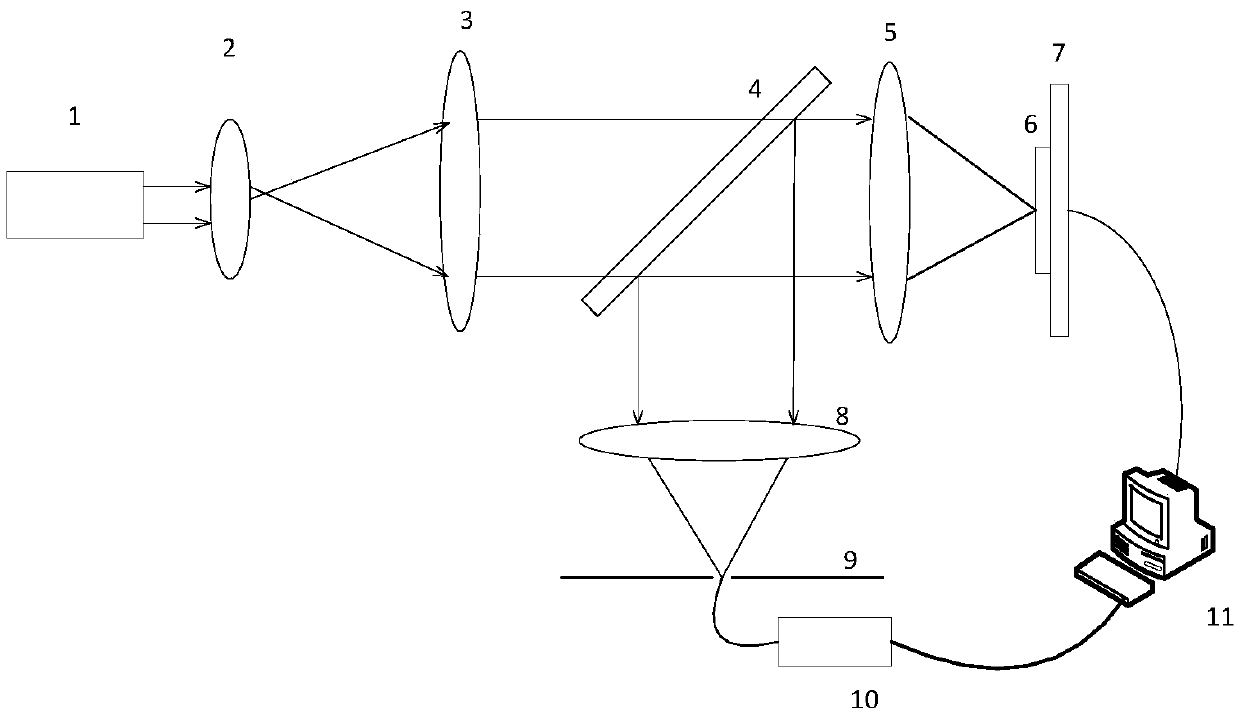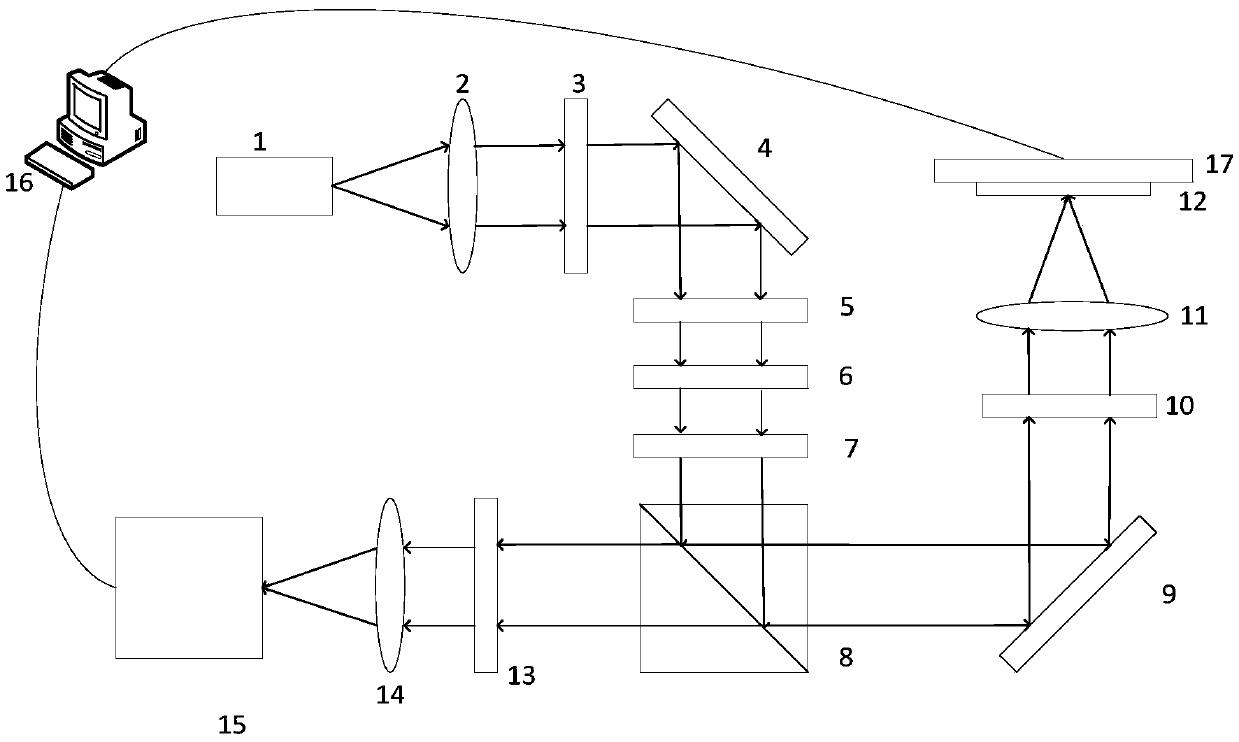Non-linear super-resolution microscopic method and device adopting photon recombination
A photon recombination and nonlinear technology, applied in the field of confocal microscopy, can solve problems such as information loss, and achieve the effects of fast imaging, good research methods, and simple structure
- Summary
- Abstract
- Description
- Claims
- Application Information
AI Technical Summary
Problems solved by technology
Method used
Image
Examples
Embodiment 1
[0070] Such as figure 2 As shown, the non-linear super-resolution microscopy device that uses a nano-moving platform to scan samples includes a high-power laser 1, a first lens 2, a polarizer 3, a first mirror 4, a 0-2π vortex phase plate 5, and a second A quarter-wave plate 6, a half-wave plate 7, a dichroic mirror 8, a second mirror 9, a second quarter-wave plate 10, an objective lens 11, a sample 12, an optical filter 13, and a second lens 14 , a detector array 15 , a computer 16 and a nanomobile platform 17 .
[0071] use figure 2 The shown device realizes the non-linear differential microscopy method, and the procedure is as follows:
[0072] (1) The laser 1 emits high-intensity illumination light, which is collimated and expanded by the first lens 2; the illumination light after collimation and expansion passes through the polarizer 3 and becomes linearly polarized light;
[0073] (2) The linearly polarized light enters the 0~2π vortex phase plate 5 for phase modula...
Embodiment 2
[0078] Such as Figure 4 As shown, a non-linear super-resolution microscopy device that realizes sample scanning by galvanometer scanning, including a high-power laser 1, a first lens 2, a polarizer 3, a first mirror 4, and a 0-2π vortex phase plate 5 , the first quarter-wave plate 6, the half-wave plate 7, the dichroic mirror 8, the two-dimensional scanning galvanometer 18, the second quarter-wave plate 10, the objective lens 11, the sample 12, the filter 13, the first Two lenses 14, a detector array 15 and a computer 16.
[0079] use figure 2 The shown setup implements a nonlinear super-resolution microscopy method, the process of which is as follows:
[0080] (1) The laser 1 emits high-intensity illumination light, which is collimated and expanded by the first lens 2; the illumination light after collimation and expansion passes through the polarizer 3 and becomes linearly polarized light;
[0081] (2) The linearly polarized light enters the 0~2π vortex phase plate 5 fo...
PUM
 Login to View More
Login to View More Abstract
Description
Claims
Application Information
 Login to View More
Login to View More - R&D
- Intellectual Property
- Life Sciences
- Materials
- Tech Scout
- Unparalleled Data Quality
- Higher Quality Content
- 60% Fewer Hallucinations
Browse by: Latest US Patents, China's latest patents, Technical Efficacy Thesaurus, Application Domain, Technology Topic, Popular Technical Reports.
© 2025 PatSnap. All rights reserved.Legal|Privacy policy|Modern Slavery Act Transparency Statement|Sitemap|About US| Contact US: help@patsnap.com



